Errors in the Idea Industry.
This started because I was intrigued by the idea that someone could be intellectually critical of TED Talks, a program I really enjoy.
An early point of the excellent article (reprinted here) referred to Guernica, and being me, I couldn't continue until I had educated myself about it somewhat.
I found this really interesting article and found some of the text actually added meat to the TED Talk article, so I have included it here first so you won't have to pause when you reach it in the 2nd article.
I really liked the initial Picasso quote attached to the 1st photo.
Picasso's
Guernica
|
What
do you think an artist is? An imbecile who has only eyes if he is a painter,
or ears if he is a musician, or a lyre in every chamber of his heart if
he is a poet, or even, if he is a boxer, just his muscles? Far, far from
it: at the same time, he is also a political being, constantly aware of
the heartbreaking, passionate, or delightful things that happen in the
world, shaping himself completely in their image. How could it be possible
to feel no interest in other people, and with a cool indifference to detach
yourself from the very life which they bring to you so abundantly? No,
painting is not done to decorate apartments. It is an instrument of war--
Pablo Picasso
|
In 1937 Pablo
Picasso painted Guernica, a mural that was the centerpiece for the
Spanish Pavilion of the World's Fair in Paris. The official theme of the Paris
Exposition was the celebration of modern technology. The Aeronautics Pavilion,
featuring
the latest advances in aircraft design and engineering, was a centerpiece of
the exposition. It is a bitter irony that Guernica, the most lasting
monument of the exposition, is the Twentieth century's most enduring symbol
of the horrors of war and the inhumane use of technology. It is a portent
for the terrors of the next decade. The painting is based on
the events of April 27, 1937, when the German airforce,
in support
of
the
Fascist forces led
by Generalissimo Francisco Franco, carried out a bombing raid on the Basque
village of Guernica in northern Spain. At that time such a massive bombing campaign
was unprecedented. The hamlet was pounded with high-explosive and incendiary
bombs for over three hours. The non-combattant townspeople including women
and children were indiscriminately cut-down as they fled their crumbling buildings.
The town of Guernica burned for three days leaving sixteen hundred civilians
killed or wounded in its smoldering remains. The Fascist planners of the bombing
campaign knew that Guernica had no strategic value as a military target, but
it was a cultural and religious center for Basque identity. The devastation
was intended to terrorize the population and break the spirit of the Basque
resistance. In effect it was intended to "shock and awe" the Basques
into submission. The bombing of Guernica was a sensation in the world press.
The Times of London called it the arch-symbol of Fascist barbarity.
Picasso's
painting is without question the most important anti-war work of art produced
in the
Twentieth Century. It is a testament to the horrors of Fascism. The authority
of this  image
is reflected in the hanging of a tapestry reproduction of Picasso's painting
outside the Security Council of the United Nations, an institution which emerged
after the defeat of Fascism. It is poignant that this symbol served as
the backdrop
to many of the public statements by diplomats engaged in the Security Council
debate during the winter of 2003 over the use of military force in Iraq.
On
January 27, a
blue curtain was used to cover the tapestry, because someone (it
is not clear whether it was a diplomat or member of the media) confidentially
approached U.N. officials expressing concern that it would not be an appropriate
background if the ambassador of the United States at the U.N. John Negroponte,
or Secretary of State Colin Powell, talk about war surrounded with women,
children
and animals shouting with horror and showing the suffering of the bombings.
image
is reflected in the hanging of a tapestry reproduction of Picasso's painting
outside the Security Council of the United Nations, an institution which emerged
after the defeat of Fascism. It is poignant that this symbol served as
the backdrop
to many of the public statements by diplomats engaged in the Security Council
debate during the winter of 2003 over the use of military force in Iraq.
On
January 27, a
blue curtain was used to cover the tapestry, because someone (it
is not clear whether it was a diplomat or member of the media) confidentially
approached U.N. officials expressing concern that it would not be an appropriate
background if the ambassador of the United States at the U.N. John Negroponte,
or Secretary of State Colin Powell, talk about war surrounded with women,
children
and animals shouting with horror and showing the suffering of the bombings.
 image
is reflected in the hanging of a tapestry reproduction of Picasso's painting
outside the Security Council of the United Nations, an institution which emerged
after the defeat of Fascism. It is poignant that this symbol served as
the backdrop
to many of the public statements by diplomats engaged in the Security Council
debate during the winter of 2003 over the use of military force in Iraq.
On
January 27, a
blue curtain was used to cover the tapestry, because someone (it
is not clear whether it was a diplomat or member of the media) confidentially
approached U.N. officials expressing concern that it would not be an appropriate
background if the ambassador of the United States at the U.N. John Negroponte,
or Secretary of State Colin Powell, talk about war surrounded with women,
children
and animals shouting with horror and showing the suffering of the bombings.
image
is reflected in the hanging of a tapestry reproduction of Picasso's painting
outside the Security Council of the United Nations, an institution which emerged
after the defeat of Fascism. It is poignant that this symbol served as
the backdrop
to many of the public statements by diplomats engaged in the Security Council
debate during the winter of 2003 over the use of military force in Iraq.
On
January 27, a
blue curtain was used to cover the tapestry, because someone (it
is not clear whether it was a diplomat or member of the media) confidentially
approached U.N. officials expressing concern that it would not be an appropriate
background if the ambassador of the United States at the U.N. John Negroponte,
or Secretary of State Colin Powell, talk about war surrounded with women,
children
and animals shouting with horror and showing the suffering of the bombings.
I think Guernica
deserves our serious attention. It testifies to the power of representations
of war, and should serve as a cautionary tale to us. Although "smart"
bombs can be targeted with extreme accuracy, their impact on representations
of war in international public opinion can not be controlled. While preparing
this webpage on March 26, 2003, reports came in concerning a bombing of a market
in downtown Baghad. Both Iraqi and "coalition" spokesmen deny responsibility
for the bombing, and there is a major public relations campaign on both sides
accusing the other side of responsibility.
PBS has produced
a valuable website focusing on Guernica
as part of a series entitled Treasures of the World. Review this site. Make
sure to read the linked pages. At the end of this page I have included a couple
of other links. Explore these. The
webpage constructed by David
Hart as part of his Responses to War includes excellent details isolated
from the painting as a whole. Examine the implications of these details.
In considering
the painting, I think it is important to understand it in relationship to the
tradition of history painting that dominated European painting at the end of
the 18th and beginning of the 19th centuries. The large size of the painting
and its oblong format echoes these history paintings which represented the most
privileged form of painting. Painters like Baron Gros in works like Murat
at the Battle of Aboukir were important precedents for Picasso. Compare
Gros' painting to Picasso's:
History painters
like Gros produced grand public displays of the accomplishments of the French
forces of Napoleon in his various campaigns. Gros' painting of Murat at the
Battle of Aboukir illustrates the heroic calvary charge of the French General
Joachim Murat to retake the fortress at Aboukir as part of the Egyptian campaign
against the Turks. Paintings like this have an added power today considering
our current campaign in Iraq. Again they raise the critical question of representation.
I was glad that Michel was not telling me that TED Talks was crap, but very interested as he used TED "thinking" to describe a problem general to the "Idea Industry".
It is a real problem and one that often peeks out to me during a TED presentation.
How can you get the lofty ideas and ideals of researchers to move out of theory and into practice?
Are there any significant obstacles to the realization of all these great ideas?
Well, there are and that is the problem with the method of TED.
I think Michel does an admirable job of presenting his case.
His obvious passion almost overwhelms him near the end as he makes his points that growth and understanding is about engagement and that in theories, we present problems to be considered rather than solutions that end inquiry and discovery.
25th April 2013
http://blog.p2pfoundation.net/umair-haque-whats-wrong-with-ted-thinking/2013/04/25Excerpted from Umair Haque:
” let the phrase “TED thinking” serve as a shorthand for the way we’ve come to think about ideas and how we share them, whether it’s through an 18-minute talk, an 800-word blog post, or the latest business “best-seller.” Hence, this post isn’t really about TED (so please don’t leave me raging comments saying “But my favorite TED talk!!!”). “TED thinking” is just a symptom: and the underlying syndrome is our broken relationship with Great Ideas. Herewith, my tiny argument:
TED thinking assumes complex social problems are essentially engineering challenges, and that short nuggets of Technology, Edutainment, and Design can fix everything, fast and cheap. TED thinking’s got a hard determinism to it; a kind of technological hyperrationalism. It ignores institutions and society almost completely. We’ve come to look at these quick, easy “solutions” as the very point of “ideas worth spreading.”
But this seems to me to miss the point and power of ideas entirely. Einstein’s great equation is not a “solution”; it is a theory — whose explanations unravel only greater mysteries and questions. It offers no immediate easy, quick “application” in the “real world,” but challenges us to reimagine what the “real world” is; it is a Great Idea because it offers us something bigger, more lasting, and more vital than a painless, disposable “solution.”
Yet in the eyes of TED thinking, it is of limited, perhaps little, value. One can imagine Einstein being invited to give a TED talk on E=MC2 — and the audience wondering “Well, what’s the point of this? What can we use it to do? How can we make megabucks from this, next year?” When ideas are reduced to engineering challenges, the focus naturally becomes near-term utility in the so-called real world. We focus on implementation without ever stopping to question our assumptions. But Great Ideas don’t resound because they have “utility” in the real world — they are Great for the very reason that they challenge us to redefine the reality of our worlds; and hence, the “utility” of our lives.
So Great Ideas aren't just “solutions”. Indeed, many of the Greatest Ideas are problems. Guernica doesn't offer any solutions to the problem of human suffering: it asks us to do something more vital, and more worthy: to reflect on, consider, and perhaps so gain a truer intimacy with the problem of war, violence, atrocity, and its permanence throughout history. Picasso would never have been invited to deliver a TED talk about Guernica because it offers no quick, easy, palatable solution (“Human Violence: Let's End It!!” #fivewordTEDtalks). Instead, it offers the precise opposite: a hard, unflinching, uncompromising portrait of grief. TED talks get rapturous standing ovations — but stand in front of Guernica for 18 minutes and exactly the opposite will happen: you will, and should, cry.
Great Ideas, then, don’t merely easily please us with their immediate utility — often, they break our hearts with desperate futility; with both the aching impossibility and sure inevitability of the trials and tests of human life. But that’s precisely what makes them Great.
Now: Yes, there was recently a TEDx in Pakistan — and there, beset by fundamentalism and violence, I believe it’s a tremendous force for good. But that’s the lowest of bars. You and I must aim higher.
The idea of our age is that Great Ideas can be simplified, reduced, made into convenient, disposable nuggets of infotainment — be they 18-minute talks, 800-word blog posts, or 140 character bursts. But can they — really? Could Aristotle really deliver the resounding, history-redefining message of the Nicomachean Ethics in…eighteen minutes? Or a series of “thought leader” blog posts on LinkedIn? Or would that, in a very real sense, cheat you and I of the power and purpose, the meaning and message, the very import and impact of the larger body of work?
Imagine I invented an Orgasm Machine. Press the button, and poof!! Effortless, instantaneous climax. Sounds great, right? But my machine would also rob you. Perhaps not of pleasure; but of the tension of love, the challenge of desire, and the drama of sex. TED is like an Orgasm Machine for the human mind. It gives us the climax of epiphany, without the challenge and tension of thought.
And in that way, I think TED thinking cheats us. Not just the “audience,” but all of us. By putting climactic epiphany before experience, education, and elevation. Sure, we can spend our lives, in this digital age, getting quick hits of epiphany from our pundit overlords. In that sense, TED thinking is like a one-night stand with ideas. One night stands can be fun, and may sometimes even lead to something more — but they’re not the great, worthy love affairs that change our lives. So I worry: TED thinking encourages something like an obsession with trivia — when it’s the searing, painful, transformative experience of Big Love you and I should be aiming at.
The TED-ification of ideas turns them into something like superficial commodities. Yet, Big Love is never just skin-deep: it involves mind, heart, body, and soul. And so while “turning complex ideas into plain English” is surely important, critical thinking asks all of us to get not just comfortable with “communication”, but uncomfortable with all the complexity, ambiguity, and nuance of a great relationship.
“Ideas conferences” like TED present us with something like an ethical vacuum. There are no sources of evil in TED world — apart from a “lack.” Insufficient Technology, Edutainment, and Design (or “innovation”, “growth”, “insights”): these are the only shortcomings the human world faces. There is no venality; no selfishness; no cruelty; no human weakness that is not readily amenable to the cure-all of Perfect Technology, Edutainment, and Design.
Hence, in TED world, there are heroes, but no villains. There are self-reliant supermen; but no rent-seekers, no criminals, no charlatans, no mountebanks, no fraudsters, schemers, or…just plain humans. There is good, but no evil. No ethics is possible given this calculus. It is an anti-ethics that perfectly describes the vacuity of our age. In this sense, TED thinking is a kind of Nietzschean enterprise: one beyond good and evil, where Supermen save the world. Yet, the real world asks us to have an ethical calculus precisely because the human heart is capable of great cruelty; of evil, of indescribable atrocity.
To me, this is the greatest and truest failure of today’s idea industry: it is a mind without a heart. TED thinking cheats us of the better angels of our nature; of ethos itself, the highest, truest, and noblest of all the arts of human thought.
Great ideas, then, demand something from us — something more than pleasure. They demand more than just our “attention” — and far more than our standing ovations. They demand not just our eyes, wallets, and hands, but our hearts, minds, and souls. They demand our heartbreak, our hurt. They demand our minds don’t just “accept” — but, as critical thinkers, object, protest, question.
In this way, Great Ideas demand precisely the opposite of TED thinking. They demand our lasting engagement, dedication and commitment; our time and energy; our frustration and infuriation; our suffering, passion, and pain — not merely our easy wonder and wide-eyed astonishment. They demand not just our rapture, but something more human: every bit of our fuller, truer, better selves.
That is precisely how Great Ideas change us: not merely by pleasing us, but by challenging us. That is precisely how they elevate us: not merely by pandering to us, or by provoking us, but by enlightening the whole of us. That is precisely what makes Great Ideas truly worthy — not just easily palatable, and commercially profitable.
Let me be clear: once again, this isn’t just about TED — but the ideas industry, and how, ironically, it oft seems hell-bent on turning each and every human on planet Earth into either a breathless “pundit” or a zombified “consumer”. But we are better — each and every one of us — than that. We are pilgrims on a hard journey; searching for the timeless, simple truths of lives well-lived. The pundits shout to our caravans from the bazaars, touting their potions and tonics. But it is only Great Ideas, waystones shimmering faintly in the distance, which have pointed and will point generations of voyagers before us and after us, that will guide us towards the waters of life itself. That is why they matter.
“TED thinking” is shorthand for the ideas industry’s obsessive, infantilizing, and creepily weird fixation with “innovation”, with “growth”, with “change”, with “value”, “utility”, and “marketability.” It is the epiphany industry. But epiphany should never be an industry. Why? Not just because such a casual approach to human thought reduces and simplifies, stripping and emptying us. But because it promises to spoil the timeless beauty of The Real Thing: The very idea of Great Ideas. The notion that ideas are worthy not merely because they “solve our problems” — but because they challenge us with problems to which our lives are the truest answers.”

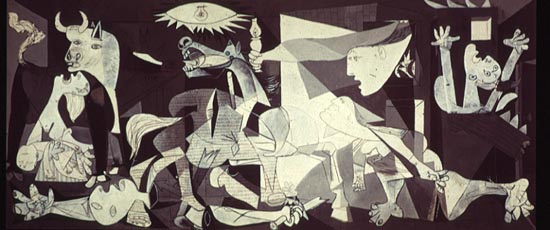
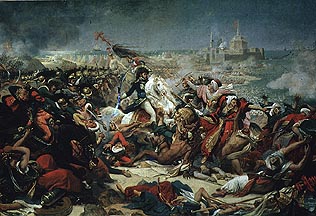

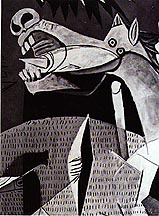
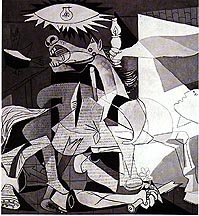
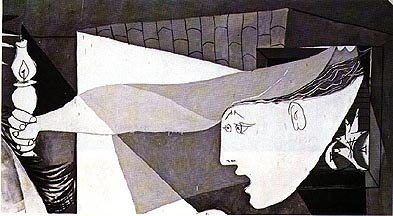
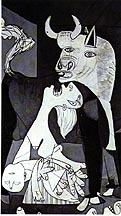
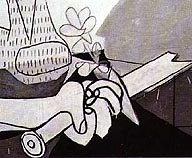

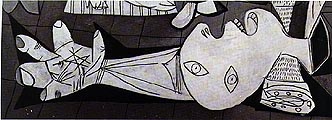

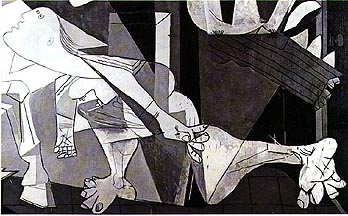
No comments:
Post a Comment